#matthew j thomas
Text
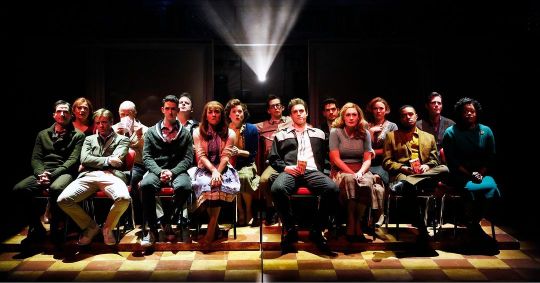
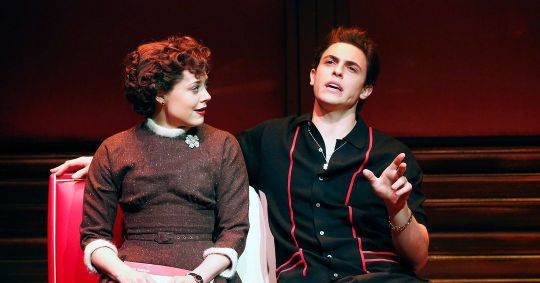


#derek klena#broadway#adam kantor#aaron c finley#josh gristetti#diner#bryan fenkart#diner the musical#matthew j thomas#erika henningsen#jacqueline b arnold#signature theatre#instagram#photos
6 notes
·
View notes
Text
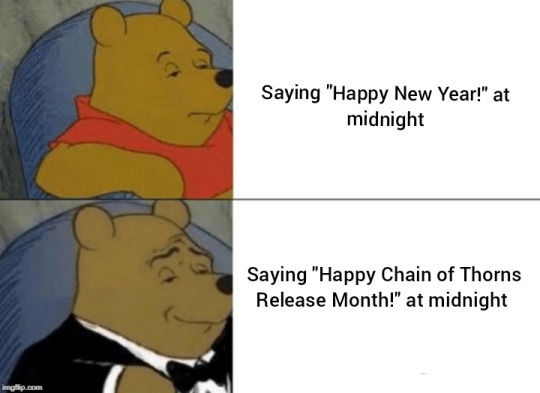
My family hates me!!
#im being emancipated#i have to move out by the 15th#/j#chain of thorns#cordelia carstairs#james herondale#lucie herondale#jesse blackthorn#matthew fairchild#alastair carstairs#thomas lightwood#anna lightwood#ariadne bridgestock#kamala joshi#tlh#the last hours#*
262 notes
·
View notes
Text
"Here we will spell out Pope Benedict's 'Method C' hermeneutics proposal which he began articulating almost two decades before becoming pope.... Put briefly, Benedict argues that if today's exegete is to make sense of the problems in scripture he must have recourse to both ancient and modern methods of interpretation. The ancient, patristic-medieval method (which he calls 'Method A') is vital because it provides us with something so many modern exegetes lack: an approach to the biblical text which is based on faith and seeks to build up the church.... Here we will explore the divine pedagogy in more detail, emphasizing its nature as sacred teaching and paying particular attention to the 'condescension' whereby God came down to mankind and taught us by means of our own feeble human words.
With these general principles in place, we will introduce the essential features of the modern, historical-critical method ("Method B"). With his positive appraisal of historical-critical exegesis, Pope Benedict has sometimes scandalized the Catholic faithful who tend to reject this method outright due to the fact that many scholars practice it with a bias against the the miraculous and even against the Christian faith in general. The pope, however, argues that the Method B approach must be essential component in faithful biblical exegesis today.... Method B.... provides us with scientific tools for ascertaining the meaning of biblical texts which even the brightest of ancient thinkers simply did not possess.... For the present, suffice it to say that Method B and Method A both have their strengths and weaknesses. Our work will entail sorting these out in the attempt to synthesize the two into a 'Method C' which later can be applied to specific texts in scripture." - Matthew J Ramage, Dark Passages of the Bible: Engaging Scripture with Benedict XVI & Thomas Aquinas
9 notes
·
View notes
Text
Links & Quotes
Some links and quotes that caught my eye this week.
Romans 8:28 tells us that God uses ALL things to accomplish His purpose for our lives. Too many times I tried to rush through things without getting anything out of it. I have lots of new content every week, which you can check out on my YouTube channel.
He is 98 years old and he’s still busy serving other people! I pray we can all be as selfless and vibrant in ministering to others until the…

View On WordPress
#advice#apologetic#Creation#Cross#Deity#Easter#Gospel of Luke#grace#Institute for Creation Research#integrity#J. Warner Wallace#Jesus Christ#John Piper#Matthew Henry#prayer#quotes#resurrection#Romans#Samuel Coleridge#servant-leadership#spiritual warfare#temptation#Thomas Watson#video
2 notes
·
View notes
Text
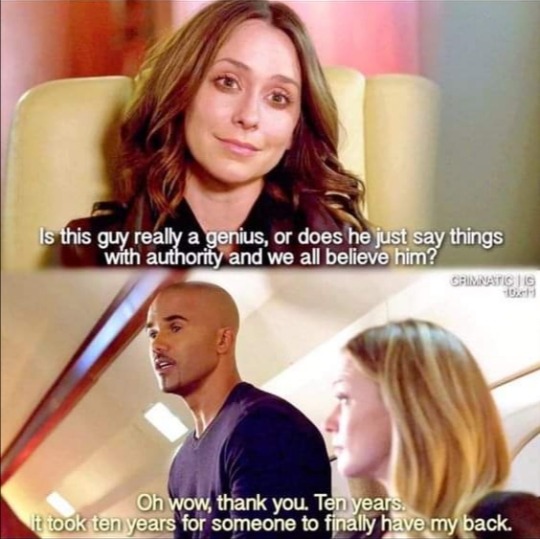
Criminal Minds, series 10 episode 11 "The Forever People."
#Criminal Minds#Series 10#Episode 11#The Forever People#Matthew Gray Gubler#Dr. Spencer Reid#Shemar Moore#Derek Morgan#A. J. Cook#JJ#Thomas Gibson#Aaron Hotchner#Rossi#Joe Mantegna#Jennifer Love Hewitt#Kate Callahan
32 notes
·
View notes
Text

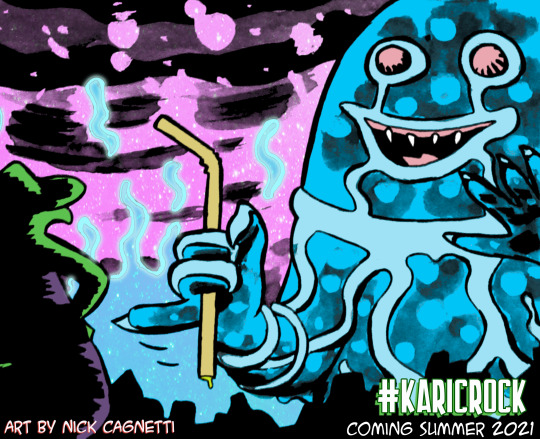




The comic book Kari Crock is coming to digital comic platforms this year.
Kari Crock is a lady crocodile working for Anvil (basically Space Amazon) delivering books, death rays, human meat and whatnot to monsters and aliens through out the galaxy. Most of whom want to eat her. Her robot bosses don't like her very much and make things difficult for her.
Issue 1 features art from Nick Cagetti, Felipe Ondera, Neal Skorpen, Amy Zing Gray, Lucas Rhossard, Tiffani Skinner, Scott W, and Maciej Skrzynski.
Nick and Felipe are back for issue 2 with Matthew James, Chelsea Rose, Kelly J. Thomas, Jade Lejeck, Amy Eloise, and Bridge of Faust.
So far issue 3 just has art from Ian Christy and Elly J. Burg, but there's a lot of art being worked on right now by a bunch of new artists to the project, as well as more returning artists.
I had exported the page files in the correct size and format last year and was ready to upload to find out that Amazon had killed Comixology Submit the week before. So I waited to see how the Comixology thing would shake out, and Amazon has more or less killed Comixology. having the new issue next to Marvel, DC, Image, Dark Horse, Oni, Archie, Boom, IDW, Dynamite, American Mythology and the rest on new comics day would have helped people find the book, but being one of millions on Kindle will make it difficult for my audience to find my book.
The plan is to fill up 4 issues with stories and then publish monthly to the Kindle, Nook and a few other digital comics platforms. I might soft launch the first issue on the Nook early, as I have several PD pulp titles there still, but last time I looked in 2015 or so, they had file size limits that made publishing comic prohibitive. I'm hoping they have fixed that since then. I have to do the research and figure out how to publish to the platform again.
P.S. Nick Cagetti, who created the look of Kari Crock when we started this in 2018, now has his awesome comic, PINK LEMONADE, at Oni Press and you should absolutely preorder/buy his comic through your favorite LCS and digitally and support his comic in every way you can.
Also I have plenty of room for more artists if you want to draw funny animal sci-fi comics. I have plenty of 1-4 page scripts that will not overtax your time. Everyone gets a share of sale based on page count, as well as a share of the big money later in the off-chance that Netflix, Funko or Dynamite throw big money at us for a cartoon series, toys or paper reprint TPBs or whatever.
#Kari Crock#KariCrock#comics#cartooncharacters#cartoons#make comics#read more comics#Nick Cagetti#Felipe Ondera#Neal Skorpen#Amy Zing Gray#Lucas Rhossard#Tiffani Skinner#Scott W#Maciej Skrzynski#Matthew James#Chelsea Rose#Kelly J. Thomas#Jade Lejeck#Amy Eloise#Bridge of Faust#Ian Christy#Elly J. Burg#indie comics#webcomics#comix#funny animal comics#scifi comics
4 notes
·
View notes
Photo




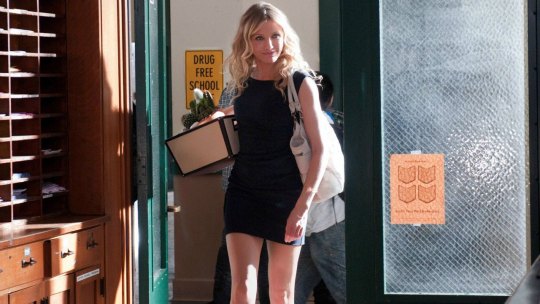

Bad Teacher (2011) Jake Kasdan
May 20th 2022
#bad teacher#2011#jake kasdan#cameron diaz#lucy punch#justin timberlake#phyllis smith#jason segel#john michael higgins#matthew j. evans#kaitlyn dever#dave allen#thomas lennon#eric stonestreet
5 notes
·
View notes
Text
Minnesota State District Court Sentences Kueng for Helping To Kill George Floyd
On October 24, 2022, Minnesota’s Hennepin County District Court Judge Peter Cahill held a hearing in the state’s criminal case against former Minneapolis police officer, J. Alexander Kueng, for aiding and abetting the manslaughter and murder of George Floyd on May 25, 2020. [1]
Instead of the scheduled selection of a jury for the trial of those charges that day, Kueng and the prosecution…
View On WordPress
#George Floyd#Hennepin County District Court (Minnesota)#J. Alendander Kueng#Judge Peter Cahill#Matthew Frank#Thomas Plunkett
0 notes
Text
Book Recommendations 📚📒
Business and Leadership:
"Good to Great" by Jim Collins
"The Lean Startup" by Eric Ries
"Zero to One" by Peter Thiel
"Leaders Eat Last" by Simon Sinek
"Outliers: The Story of Success" by Malcolm Gladwell
Success and Personal Development:
"The 7 Habits of Highly Effective People" by Stephen R. Covey
"Mindset: The New Psychology of Success" by Carol S. Dweck
"Atomic Habits" by James Clear
"Grit: The Power of Passion and Perseverance" by Angela Duckworth
"The Power of Habit" by Charles Duhigg
Mental Health and Well-being:
"The Power of Now" by Eckhart Tolle
"Feeling Good: The New Mood Therapy" by David D. Burns
"The Gifts of Imperfection" by Brené Brown
"The Anxiety and Phobia Workbook" by Edmund J. Bourne
"The Dialectical Behavior Therapy Skills Workbook" by Matthew McKay, Jeffrey C. Wood, and Jeffrey Brantley
Goal Setting and Achievement:
"Goals!: How to Get Everything You Want—Faster Than You Ever Thought Possible" by Brian Tracy
"The 12 Week Year" by Brian P. Moran and Michael Lennington
"Drive: The Surprising Truth About What Motivates Us" by Daniel H. Pink
"The One Thing" by Gary Keller and Jay Papasan
"Smarter Faster Better" by Charles Duhigg
Relationships and Communication:
"How to Win Friends and Influence People" by Dale Carnegie
"The 5 Love Languages" by Gary Chapman
"Crucial Conversations: Tools for Talking When Stakes Are High" by Al Switzler, Joseph Grenny, and Ron McMillan
"Nonviolent Communication: A Language of Life" by Marshall B. Rosenberg
"Men Are from Mars, Women Are from Venus" by John Gray
Self-Help and Personal Growth:
"The Subtle Art of Not Giving a F*ck" by Mark Manson
"Daring Greatly" by Brené Brown
"Awaken the Giant Within" by Tony Robbins
"The Miracle Morning" by Hal Elrod
"You Are a Badass" by Jen Sincero
Science and Popular Science:
"Sapiens: A Brief History of Humankind" by Yuval Noah Harari
"The Immortal Life of Henrietta Lacks" by Rebecca Skloot
"Cosmos" by Carl Sagan
"A Short History of Nearly Everything" by Bill Bryson
"The Selfish Gene" by Richard Dawkins
Health and Nutrition:
"The China Study" by T. Colin Campbell and Thomas M. Campbell II
"In Defense of Food" by Michael Pollan
"Why We Sleep" by Matthew Walker
"Born to Run" by Christopher McDougall
"The Omnivore's Dilemma" by Michael Pollan
Fiction and Literature:
"To Kill a Mockingbird" by Harper Lee
"1984" by George Orwell
"The Great Gatsby" by F. Scott Fitzgerald
"The Catcher in the Rye" by J.D. Salinger
"Pride and Prejudice" by Jane Austen
#books#books and reading#reading#goodreads#bookshelf#bookish#readersofinstagram#reading list#personal improvement#personal development#life advice#advice
1K notes
·
View notes
Link
Winged Wheel is a new indie supergroup, featuring Whitney Johnson (Matchess, Damiana), Cory Plump (Spray Paint, Expensive Shit), Matthew J. Rolin (Powers/Rolin Duo), and Fred Thomas (Idle Ray, Tyvek). It is the outcome of four artists who have crossed paths over the years putting their quarantine sanity projects together in a game of long-distance musical telephone, an incredible band emerging seemingly out of nowhere with minimal effort and most decisions made casually over Instagram DMs.
In August of 2020, Thomas was recording music all day every day at home, because it felt weird to do anything besides work on music indoors. Plump reached out to Thomas after seeing a video he posted to Instagram about how he got a cool drum sound using a single mic on top of the kick drum, asking if Thomas would send him some drum loops to use on the recordings he had been making. Plump eventually reeled in Matthew Rolin, whose unique style of guitar playing changed the whole direction of the project. (Notably, this record marks the first time Rolin has played electric guitar at all in years, particularly in a band setting.) Though originally Plump tried vocals on the songs, they didn’t work. Everyone was surprised and delighted when they asked Whitney Johnson to contribute her voice and she obliged.
It’s difficult to believe they’ve never all been in the same room. At times ripping and rollicking, like on opener “Monsella,” that pace often dissipates into more ambient kosmische zones (“Central Ceiling,” “Stone Oaks”). There is a definitive dreaminess to the record—largely the result of Rolin’s guitar playing, Thomas’s synth overdubs, and Johnson’s signature use of voice as emotive texture rather than discernible verbal messages—and a sense of forward motion maintained by Thomas’s drum loops and Plump’s basslines, which often propel as much as they waver, darting psychedelically in and out. But moments like “Lasso Motel” might make one wonder where exactly we are and how exactly we got here. The use of field recordings and occasional radio dial sounds in between tracks contributes to the sense that we are shifting in and out of different channels or realities—almost like we are being encouraged to take charge of our own through the audio controls.
Despite its origins in remote collaboration, this is music for open roads and shifting skies; a soundtrack for driving into uncharted territory. No Island functions reflexively as a title—as both a refusal to become isolated in the quarantined world and an adventure to a dream place outside, forged from many different insides. - Erin Margaret Day
#bandcamp#winged wheel#fred thomas#cory plump#whitney johnson#matthew j. rolin#powers / rolin duo#spray paint#tyvek#rider/horse#matches#idle ray
1 note
·
View note
Text

Derek Klena’s Instagram Story (December 30, 2022)
#Derek Klena#broadway#aaron c finley#matthew j thomas#ethan slater#ari brand#noah weisberg#diner cast#diner#social media#instagram#photos
1 note
·
View note
Text





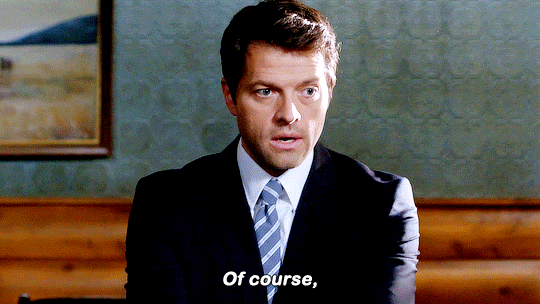
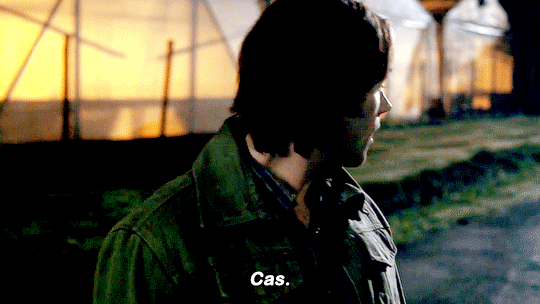


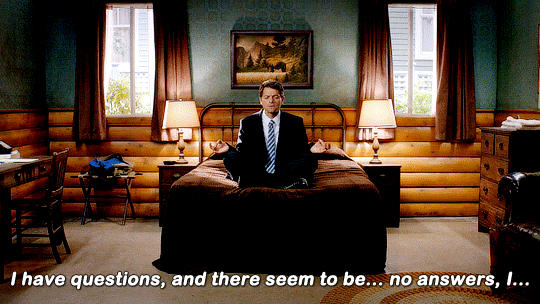
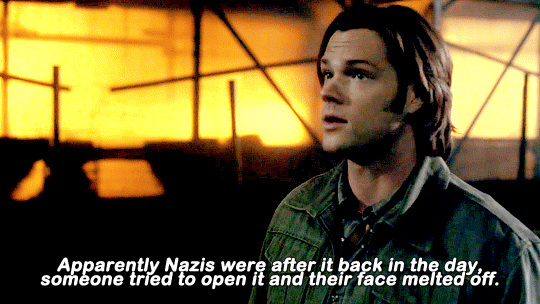

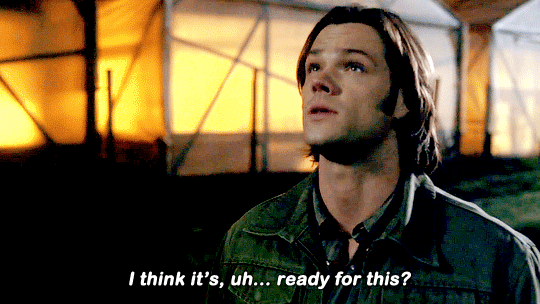


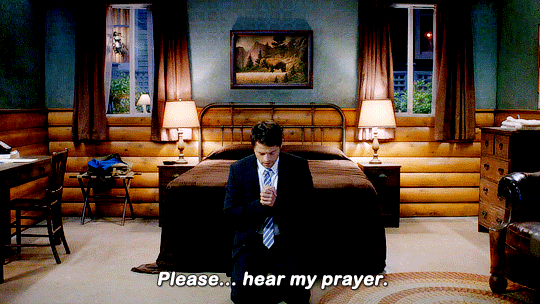

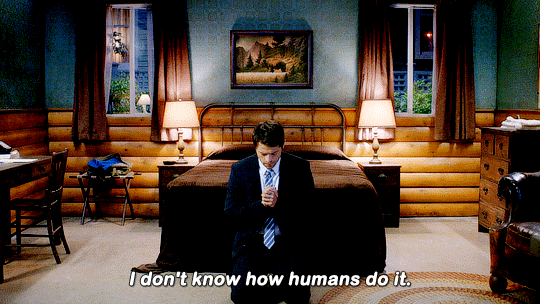

STACKEDextras ➙ You actually showed
6.10 Caged Heat
Written by Brett Matthews & Jenny Klein
Directed by Robert Singer
9.9 Holy Terror
Written by Eugenie Ross-Leming & Brad Buckner
Directed by Thomas J. Wright
Original Air Dates: December 3, 2010 & 2013
#supernatural#castiel#sam winchester#sastiel#stackednatural#castieledit#samwinchesteredit#casedit#spnedit#supernaturaledit#cowboycoven#spncreatorsdaily#userbbelcher#useranny#becauseofthebowties#altarofrowena#rambleoncas#tusersana#userdorksinlove#deancaskiss#anztag#userbon#deanncastiel#jennmish#userrlaura#usererinlindslay#6x10/9x9
249 notes
·
View notes
Text
"It is precisely the reality that our faith has a 'substance' that allows Aquinas to develop his theology of the history of revelation, which is able to vindicate the unity of divine revelation (a key component of Method A exegesis) while recognizing its development over the course of time (acknowledged above all by Method B exegesis). Specifically, Aquinas is able to argue that the 'substance of the articles of faith,' that is to say the essence of divinely revealed truth, did not change over time even though the people of Israel affirmed an increasing 'number of articles of faith' throughout salvation history. He writes:
As regards the substance of the articles of faith (substantia articulorum fidei), they have no received any increase at time went on: since whatever those who lived later have believed was contained, albeit implicitly, in the faith of those Fathers who preceded them. But there was an increase in the number of articles (numerus articulorum) believed explicitly, since to those who lived in later times some were known explicitly which were not known explicitly by those who lived before them.
.... One can say that the Old Testament, and indeed the whole of scripture, coveys revealed truth precisely because its authors possessed the substance of the Christian faith - even if it was in an inchoate manner that fell short of belief in the Trinity, hope for the Resurrection, or a clear articulation of the nature of good and evil." - Matthew J. Ramage, Dark Passages of the Bible: Engaging Scripture with Benedict XVI and Thomas Aquinas
0 notes
Text
Band of Brothers Ages: IRL vs. Actors
Did you know that according to a 1947 study, almost half the men who served in WWII were still under age 26 by the end of the war?
What this is : A (very long) post comparing the ages of the actors in Band of Brothers vs. the IRL figures they are portraying.
Background: Did I need to do this? No. Did anyone ask for this? Also no. Did I do it anyway? Yes.
Disclaimers: This is SUPER approximate for the most part. I based IRL ages off of D-Day unless otherwise noted, and actor ages off of January 1, 2000, the year filming took place (the latter is where the most variation will be because I didn't try to figure out what month filming started). I also didn't fact-check birthdays beyond googling. Most are sourced from the Band of Brothers and Military Wikis on fandom.com, Wikipedia, and IMDb.
I broke them up into rough categories, which are, again, approximate. I know I often forget how young the real life people were here, and this was a good reminder of that. I also found it interesting to see which actors were actually younger than their roles!
Check it all out under the cut ⬇️
~10+ years older
Dale Dye (55) as Col. Robert F. Sink (39) (~16 years)
Michael Cudlitz (35) as Denver "Bull" Randleman (23) (~12)
Marc Warren (32) as Albert Blithe (20) (~12)
Rocky Marshall (33) as Earl J. McClung (21) (~12)
Frank John Hughes (32) as William J. Guarnere (21) (~11)
Neal McDonough (33) as Lynn D. (Buck) Compton (22) (~11)
Dexter Fletcher (33) as John W. Martin (22) (~11)
~5+ years older
Simon Schatzberger (32) as Joseph A. Lesniewski (23) (~9)
Richard Speight Jr. (30) Warren H. (Skip) Muck (22) (~8)
Jason O'Mara (30) as Thomas Meehan (22) (~8)
Ron Livingston (32) as Lewis Nixon (25) (~7)
Donnie Wahlberg (30) as C. Carwood Lipton (24) (~6)
Matthew Settle (30) as Ronald C. Speirs (24) (~6)
Nolan Hemmings (28) as Charles E. "Chuck" Grant (22) (~6)
Douglas Spain (25) as Antonio C. Garcia (19) (~6)
George Calil (26) as James H. "Mo" Alley Jr. (21) (~5)
Rick Gomez (27) as George Luz (22) (~5 year)
Scott Grimes (28) as Donald G. Malarkey (23) (~5)
Stephen Graham (26) as Myron "Mike" Ranney (21) (~5)
~less than 5 years older
Shane Taylor (25) as Eugene G. Roe (21) (~4)
Tim Matthews (23) as Alex M. Penkala Jr. (19) (~4)
Matthew Leitch (24) as Floyd M. "Tab" Talbert (20) (~4)
Peter O'Meara (30) as Norman S. Dike Jr. (26) (~4)
Tom Hardy (22) as John A. Janovec (18) (~4)
Rick Warden (28) as Harry F. Welsh (25) (~3)
Kirk Acevedo (28) as Joseph D. Toye (25) (~3)
Eion Bailey (25) as David Kenyon Webster (22) (~3)
Craig Heaney (26) as Roy W. Cobb (29) (~3)
Damian Lewis (28) as Richard D. Winters (26) (~2)
Robin Laing as Edward J. "Babe" Heffron (~2, 21/23)
Ben Caplan (26) as Walter S. "Smokey" Gordon Jr. (24) (~2)
David Schwimmer (32) as Herbert M. Sobel (33) (~1 year)
Michael Fassbender (22) as Burton P. "Pat" Christenson (21) (~1)
Colin Hanks (22) as Lt. Henry Jones (21) (~1) (age around Bastogne)
Bart Ruspoli (23) as Edward J. Tipper (22) (~1)
~Same age
Peter Youngblood Hills as Darrell C. "Shifty" Powers (21)
Mark Huberman as Lester "Les" Hashey (19)
Younger
Lucie Jeanne (23) as Renée Lemaire (30) (age around Bastogne) (~7)
Ross McCall (23) as Joseph D. Liebgott (29) (~6)
Simon Pegg (29) as William S. Evans (~33) (~4)
Philip Barantini (19) as Wayne A. "Skinny" Sisk (22) (~3)
James Madio (24) as Frank J. Perconte (27) (~3)
Stephen McCole (25) as Frederick "Moose" Heyliger (27) (~2)
Matt Hickey (~16) as Patrick S. O'Keefe (18) (~2)
Incomplete/not found
Phil McKee as Maj. Robert L. Strayer (34)
Rene L. Moreno as Joseph Ramirez (30)
Doug Allen as Alton M. More (24)
David Nicolle as Lt. Thomas A. Peacock (24)
Rebecca Okot as Anna (Augusta Chiwy) (24) (age around Bastogne)
Alex Sabga-Brady as Francis J. Mellet (23)
Mark Lawrence as William H. Dukeman Jr. (22)
Nicholas Aaron as Robert E. (Popeye) Wynn (22)
Peter McCabe as Donald B. Hoobler (21)
Marcos D'Cruze as Joseph P. Domingus (not found)
#ty mercurygray for that sweet sweet jstor access#band of brothers#uhh one more disclaimer it's entirely possible that i mistyped stuff here and that i switched ages/etc.#i did try to proofread though!#anyway. i apologize if anyone has already done this.#shoshi.txt#sort of#it's also very possible that i spent too much time online today
78 notes
·
View notes
Text
Blackcrowing's Master Reading List

I have created a dropbox with pdfs I have gathered over the years, I have done my best to only allow access to documents which I found openly available through sites like JSTOR, Archive.org, or other educational resources with papers available for download.
That being said I ALSO recommend (I obviously have not read all of these but they are either in my library or I intend to add them)
📚 Celtic/Irish Pagan Books
The Morrighan: Meeting the Great Queens, Morgan Daimler
Raven Goddess: Going Deeper with the Morríghan, Morgan Daimler
Ogam: Weaving Word Wisdom, Erynn Rowan Laurie
Irish Paganism: Reconstructing Irish Polytheism, Morgan Daimler
Celtic Cosmology and the Otherworld: Myths, Orgins, Sovereignty and Liminality, Sharon Paice MacLeod
Celtic Myth and Religion, Sharon Paice MacLeod
A Guide to Ogam Divination, Marissa Hegarty (I'm leaving this on my list because I want to support independent authors. However, if you have already read Weaving Word Wisdom this book is unlikely to further enhance your understanding of ogam in a divination capacity)
The Book of the Great Queen, Morpheus Ravenna
Litany of The Morrígna, Morpheus Ravenna
Celtic Visions, Caitlín Matthews
Harp, Club & Calderon, Edited by Lora O'Brien and Morpheus Ravenna
Celtic Cosmology: Perspectives from Ireland and Scotland, Edited by Jacqueline Borsje and others
Polytheistic Monasticism: Voices from Pagan Cloisters, Edited by Janet Munin
📚 Celtic/Irish Academic Books
Early Medieval Ireland 400-1200, Dáibhí Ó Cróinín
The Sacred Isle, Dáithi Ó hÓgáin
The Ancient Celts, Berry Cunliffe
The Celtic World, Berry Cunliffe
Irish Kingship and Seccession, Bart Jaski
Early Irish Farming, Fergus Kelly
Studies in Irish Mythology, Grigory Bondarnko
Prehistoric Archaeology of Ireland, John Waddell
Archeology and Celtic Myth, John Waddell
Understanding the Celtic Religion: Revisiting the Past, Edited by Katja Ritari and Alexandria Bergholm
A Guide to Ogam, Damian McManus
Cesar's Druids: an Ancient Priesthood, Miranda Aldhouse Green
Animals in Celtic Life and Myth, Miranda Aldhouse Green
The Gods of the Celts, Miranda Green
The Celtic World, Edited by Miranda J Green
Myth and History in Celtic and Scandinavian Tradition, Edited by Emily Lyle
Ancient Irish Tales, Edited by Tom P Cross and Clark Haris Slover
Cattle Lords and Clansmen, Nerys Patterson
Celtic Heritage, Alwyn and Brinley Rees
Ireland's Immortals, Mark Williams
The Origins of the Irish, J. P. Mallory
In Search of the Irish Dreamtime, J. P. Mallory
The Táin, Thomas Kinsella translation
The Sutton Hoo Sceptre and the Roots of Celtic Kingship Theory, Michael J. Enright
Celtic Warfare, Giola Canestrelli
Pagan Celtic Ireland, Barry Raftery
The Year in Ireland, Kevin Danaher
Irish Customs and Beliefs, Kevin Danaher
Cult of the Sacred Center, Proinsais Mac Cana
Mythical Ireland: New Light on the Ancient Past, Anthony Murphy
Early Medieval Ireland AD 400-1100, Aidan O'Sullivan and others
The Festival of Lughnasa, Máire MacNeill
Curse of Ireland, Cecily Gillgan
📚 Indo-European Books (Mostly Academic and linguistic)
Dictionary of Indo-European Concepts and Society, Emily Benveniste
A Dictionary of Selected Synonyms in the Principle Indo-European Languages, Carl Darling Buck
The Horse, the Wheel and Language, David W. Anthony
Comparative Indo-European Linguistics, Robert S.P. Beekes
In Search of the Indo-Europeans, J.P. Mallory
Indo-European Mythology and Religion, Alexander Jacob
Some of these books had low print runs and therefore can be difficult to find and very expensive... SOME of those books can be found online with the help of friends... 🏴☠️
library genesis might be a great place to start... hint hint...
#books#book#resource#blackcrowing#pagan#paganism#irish mythology#celtic#irish paganism#irish polytheism#celtic paganism#celtic polytheism#celtic mythology#indo european#indo european mythology#historical linguistics#paganblr#masterlist#irish reconstructionism#irish reconstructionist#celtic reconstructionist#celtic reconstructionism#masterpost
95 notes
·
View notes
Text
'One windy night in March 2022, in the desert outside Belen, New Mexico, Cillian Murphy was waiting to climb a 100-foot steel tower, a copy of the one that held the first nuclear bomb ever detonated in 1945. The conditions were right for summoning the emotion of the historic scene the Irish actor was about to play as physicist J. Robert Oppenheimer. “You could see this sand coming up off the desert and the skies were ominous,” Murphy says. “I remember thinking, ‘Oh my God, this is fucking great.’ “
Nearby, as gusts whipped at the production tents, producer Emma Thomas was having the opposite reaction. “Imax cameras shooting film in the middle of a windy desert. The absolute worst,” says Thomas. “Miserable for people. Terrible for cameras.”
Though tense for the film crew, the sandstorm on the set of Christopher Nolan’s Oppenheimer replicated the one the scientists and military officers had faced the night before the real Trinity test, as the U.S. Army code-named the effort. And Nolan — the rare filmmaker who can still convince a studio to back such an ambitious movie — was determined to keep shooting. “Chris always gets told that he’s lucky with weather, and I think he is,” says Thomas, who is also Nolan’s wife and the mother of his four children. “But I think he also feels like he creates his own weather.” As it had in 1945 before the nuclear test began at dawn, the wind stilled abruptly, and Nolan got his shots.
It says something about the director’s reputation for a near-religious commitment to big-screen spectacle that when news first broke online about Nolan shooting the Trinity test scene without using CGI, a fair number of movie fans assumed that meant he had literally detonated an atomic bomb on set. “It’s flattering that people would think I would be capable of something as extreme as that on the one hand, but it’s also a little bit scary,” Nolan says during an interview in mid-June, in the Los Angeles offices of his and Thomas’ production company, Syncopy Inc. All the interviews for this story were conducted before SAG-AFTRA called a strike on July 13 — a move which prompted the cast members in attendance that day to walk out of Oppenheimer’s London premiere.
It’s not just in his filmmaking that Nolan prefers to rely on analog methods. He doesn’t use email or carry a smartphone, and when he writes his scripts, he does so on a computer that isn’t connected to the internet. “My kids would probably say I’m a complete Luddite,” he says. “I would actually resist that description. I think technology and what it can provide is amazing. My personal choice is about how involved I get. It’s about the level of distraction. If I’m generating my material and writing my own scripts, being on a smartphone all day wouldn’t be very useful for me.”
Oppenheimer, which chronicles the Manhattan Project’s development of nuclear weapons and the political and emotional fallout for the people who built them, is both an ode to and a cautionary tale about humanity’s ability to harness science and technology. The $100 million movie, which Universal will release July 21, is inspired by the 721-page, Pulitzer Prize-winning 2005 book American Prometheus by Kai Bird and Martin J. Sherwin.
The sprawling, starry cast boasts 79 speaking roles, including Emily Blunt as Oppenheimer’s wife, Kitty; Matt Damon as Leslie Groves, the U.S. Army Corps of Engineers officer who directed the project; Robert Downey Jr. as Lewis Strauss, chair of the U.S. Atomic Energy Commission; and Florence Pugh as Jean Tatlock, a psychiatrist with whom Oppenheimer had a passionate but tortured affair. The group of actors playing the scientists who worked on the Manhattan Project, including Josh Hartnett, Benny Safdie and Swedish actor Gustaf Skarsgard, are so numerous that they have their own WhatsApp group, called the “Oppenhomies.” Kenneth Branagh, Matthew Modine and Gary Oldman also appear. “It was the cast of Ben-Hur,” says Downey. “Everybody would have their moments. There were no small scenes.”
There are seat-rattling explosions, multiple steamy sex scenes and existential stakes. But Oppenheimer is also a biopic of a theoretical physicist, a man whose work is so abstract that it’s impossible to see. It’s R-rated, three hours long, with large chunks shot in black and white on Imax film developed expressly for Nolan and his cinematographer, Hoyte van Hoytema. And it contains a level of moral complexity that doesn’t exactly cry out summer popcorn movie — instead of the fictional CGI cities that are demolished in the third act of most summer films, Oppenheimer’s work led to the destruction of real cities, Hiroshima and Nagasaki, and more than 200,000 casualties.
“[Nolan] said to me, ‘This is the kind of movie that they used to make in the ’90s,’ ” says Damon. “It feels like when an Oliver Stone movie would come out and you’d go, ‘That’s one of the movies I’m going to see this year no matter what, because everyone’s going to be talking about it.’ But those movies have disappeared from the multiplex.”
The seed of Oppenheimer was planted in Nolan’s 2020 science fiction film, Tenet, in which a character references the physicist when comparing the creation of a doomsday device to the development of the first atomic bomb. Robert Pattinson, who co-starred in Tenet, gave Nolan a collection of Oppenheimer’s speeches as a wrap gift, and when Nolan read the speeches the physicist made in the 1950s, after the bombings of Hiroshima and Nagasaki, he saw the makings of a fascinating character study. “When you read the words of people speaking at that time, you see them wrestling with the implications and the consequences of what’s happened and what they’ve done,” Nolan says. “I started to get very excited about, rather than using it as an analogy in a science fiction sense, telling the actual reality of the story, really trying to be there, to give people the experience of what it would have been like to be Oppenheimer in those moments.”
Nolan, 52, grew up in the U.K. at the height of nuclear anxiety. In the 1980s, he watched as young people flocked to join the country’s growing Campaign for Nuclear Disarmament, saw movies like the 1986 animated nuclear disaster film When the Wind Blows and heard the 1985 Sting song “Russians,” which includes the line, “How can I save my little boy from Oppenheimer’s deadly toy?” Nolan became fascinated by one point he learned over the years, which would come to animate him as a filmmaker: that there had been a moment when the Manhattan Project scientists realized they couldn’t completely eliminate the possibility of a chain reaction from an atomic bomb that would set fire to the atmosphere and destroy the world. “In the absence of being able to completely eliminate the possibility, they went ahead and pushed the button,” Nolan says. “That’s an incredible room to be in, an incredibly dramatic moment to take an audience to.”
The resulting movie is “sort of an origin story in a strange way, not a million miles away from the things we were doing with Batman and the Dark Knight trilogy,” Nolan says. “I got excited by his intellectual curiosity and adventurism in the 1920s, which was shared by all his peers. It was a revolution in physics that corresponded very closely to all the other revolutions in all aspects of life — the music of Stravinsky and modernism and literature, Picasso painting.”
One of the most unusual creative choices Nolan made was to write much of the script in the first person, including stage directions — instead of “Oppenheimer walks into the room,” for instance, the script reads, “I walk into the room.” Nolan did this, he says, to distinguish between two timelines: one from Oppenheimer’s point of view, shot in color, and the other, more objective, in black and white. The script detailed how Nolan planned to make the conceptual physics real for an audience through use of image and sound. “What does it look like, how things exploded and crashed against each other,” says Blunt. “All the visuals were very detailed in his stage descriptions.” Tonally, the movie would have to take the audience from the triumph of scientific achievement to the devastating realization of its impact. “Very often when you’re planning a film, whatever the most seemingly difficult challenge is, the way to deal with it is to embrace it as the biggest strength of the material,” Nolan says. “For me, the idea of going with these scientists from the absolute highest high to the lowest low in as dramatic and compressed a way as possible, that became the hinge point, the engine of the film.”
Oppenheimer is Murphy’s sixth film with Nolan. He has always played supporting roles: the Scarecrow in the Dark Knight films, a businessman in Inception, a shivering soldier in Dunkirk. Nolan says he doesn’t have actors in mind when he writes, but when he finished his Oppenheimer draft, casting the lead was obvious. “I’ve been staring at the cover of the book American Prometheus for so many months, and there’s this photograph, black and white, a light blue-eyed stare, very intense, of this guy,” Nolan says. “And I thought, ‘Well, I know who could do that.’ ” Murphy, who also played a physicist who designed a bomb in the 2007 Danny Boyle science fiction movie Sunshine, jokes that he has “resting physicist’s face.” Murphy was at home in Ireland when Nolan called, offering the role of a lifetime. “He’s just so understated and matter-of-fact and British,” Murphy says of Nolan. “It was like, ‘Cillian, look, I have a script, it’s Oppenheimer and I’d like you to play Oppenheimer.’ That was it.”
Nolan prefers to hand-deliver his scripts rather than email them. “People will say, ‘Why do you work in secrecy?’ ” Nolan says. “Well, it’s not secrecy, it’s privacy. It’s being able to try things, to make mistakes, to be as adventurous as possible. And to be able to sit with somebody who’s just read what you’ve written and get their take on it, see how they connect with it in a very human, face-to-face way.” In Murphy’s case, Nolan flew to Ireland and waited while the actor read the document; Downey went to Nolan’s home in L.A. to read it. “I was like, ‘Wow,’ ” Downey says. “And he was like, ‘So will you do it?’ I was like, ‘Uh, usually, there’s 38 phone calls.’ But he’s Chris Nolan. So I was like, ‘Yeah, I think I will.’ ”
Nolan’s movies have made more than $5 billion at the global box office, and he is almost singular in his ability to attract broad audiences not only to franchise fare like the Dark Knight trilogy but also original ideas like 2010’s Inception ($836.8 million) and 2014’s Interstellar ($773.8 million) and historical fare like 2017’s Dunkirk ($525.2 million). After being delayed three times because of the COVID-19 pandemic, Tenet was the first Hollywood tentpole to launch in theaters in the summer of 2020, a time when most U.S. cineplexes were operating at less than half capacity. In that diminished box office environment, the movie made $363.7 million worldwide, but the film and the pandemic helped usher in the end of Nolan’s relationship with what had been his longtime home studio, Warner Bros. When the company announced in December 2020 that it was dropping its entire 2021 theatrical slate directly onto its then-nascent streaming service, HBO Max, much of the industry complained in private, but Nolan was the most prominent director to publicly criticize the studio. “They don’t even understand what they’re losing,” Nolan said in a statement to THR at the time. (Nolan is himself a voracious moviegoer with varied and sometimes surprising tastes — for instance, he and his family watch Love Actually every Christmas and he enjoys the Fast & Furious franchise. “He watches every single movie, of every type of genre,” says Blunt. “And you never hear him shit-talk other people’s movies. He knows how hard it is to direct a great movie.”)
The current writers strike is driven by many of the same issues that frustrated talent about Warner Bros.’ pandemic-era policies, including transparency and residuals. “In the last few years, it’s very often not been clear what a studio’s intention is,” Nolan says. “Why they’re making a particular project, what they’re then going to do with it, how they monetize it. Do they monetize it at all? Is it a loss leader to drive subscriber growth? A lot of the reason that there’s a strike right now is we have to make the streamers pay the true cost of production. The business models don’t work right now.”
Nolan says he voted to ratify the contract the Directors Guild struck with the Alliance of Motion Picture and Television Producers in June. “The parameters of the deal are certainly going to help the other guilds in negotiations,” he says. “It’s very important that all the guilds get a great deal right now. It is a transitional moment. The move to streaming has thrown up all kinds of economic issues with all the guilds and in particular, the writers. And now is the moment that we need to fix those things.”
In mid-2021, Nolan had left Warner Bros. and was meeting with the other major studios about making Oppenheimer. “I told them it was a three-hour film,” Nolan says. “I told them it would be R-rated. I told them what the budget would be. Emma and I, we’ve taken a view that telling studios exactly what we’re doing and sticking to that is the clearest, simplest thing to do.”
Through their kids, Nolan and Thomas were friends with Donna Langley, now the chairman and chief content officer of the NBCUniversal studio group, and Langley saw Nolan as an ally in the studio’s attempt to resuscitate the theatrical business. “Coming out of the pandemic, we were wondering what would make audiences come back to theaters,” says Langley. “[Nolan] is one of a handful of directors whose name alone inspires audiences globally to go to the movie theater.” Universal guaranteed Nolan an exclusive theatrical release for between 90 and 120 days on Oppenheimer, far longer than the studio’s pandemic-era exclusive windows, which ranged from 17 to 31 days. “Given Chris’ experience with his prior movie, it was clear the theatrical window was important to him,” Langley says.
By February 2022, production was underway, with locations including Oppenheimer’s actual house in New Mexico and Albert Einstein’s office in Princeton, New Jersey. The film secured permission to shoot at the White Sands Missile Range, where the Trinity test occurred, but because it is still an active military base, the hours were inconvenient, and instead production designer Ruth De Jong re-created the site in the desert. Some of the scientists followed the shoot and worked as extras. “You’d be in a scene and you’d casually chat to someone and he was a high-end physicist working in Los Alamos,” says Murphy.
Nolan’s sets feel different from most, say the actors. “There aren’t a lot of people running around on phones. There’s no video village. There’s no chair with your name on it,” says Downey. “It was focused and Spartan, almost a monastic approach to what we’re doing.” Despite Nolan’s reputation for precision, there are no marks on the floor for actors to hit. “He’s like, ‘We don’t need to put down marks because you shouldn’t be looking for them, and my team should be able to find you wherever you are,’ ” Downey adds. “It’s actually kind of super loose within this controlled format.” Nolan’s notes to his actors are concise and focused. “We did a scene a few times and I wasn’t getting it,” says Murphy. “I may have come in a bit hard. He leaned over to me and said, ‘He’s not a boxer, he’s a chess player.’ Boom. You just go, ‘Totally get it.’ You get used to these big, huge fucking cameras moving toward you, but you’re really there in the moment doing it as truthfully as you possibly can.”
Early on in his research, Nolan had a conversation with physicist Robbert Dijkgraaf that signaled a potentially enormous problem for the film. Dijkgraaf explained that in the early 20th century, during the transition from classical physics to quantum mechanics, “one of the things that had been challenging and alienating for physicists was that, as [Dijkgraaf] put it, they could no longer visualize the atom,” Nolan says. “And of course, to me that was very frightening. I said to him, ‘Well, that’s my job. That’s what I have to do. What do you mean you can no longer visualize it?’ He said, ‘Well, you can’t because it’s energy fields lying on top of each other. It’s not ping-pong balls flying around.’ ”
Nolan came to the conclusion that he would rely on his editor, Jennifer Lame, to help him create a visceral feeling of the physics, layering visual effects, sound and Ludwig Göransson’s score. “I got excited by, how can cinema help you understand something not intellectually, but emotionally, that it’s really impossible to visualize in other ways?” Nolan says. He relied on special effects supervisor Scott Fisher and visual effects supervisor Andrew Jackson to help him create a representation of the physics on film through the use of practical effects — the effects department’s experiments included smashing ping-pong balls together, throwing paint at a wall and shooting at various frame rates. Out of a desire to preserve the illusion, Nolan declines to say what actually created the finished effect, except that it is definitely not computers — there is no CGI in the film at all. “CG inherently is quite comfortable to look at,” Nolan says. “It’s safe, anodyne. And what I said to Andrew on Oppenheimer is, ‘This can’t be safe. It can’t be comfortable to look at it. It has to have bite. It’s got to be beautiful and threatening in equal measure.’ “
Oppenheimer is eerily topical. In March, against the backdrop of the war in Ukraine, the United Nations said the risk of nuclear weapons use is higher now than at any time since the Cold War. Another technological innovation, artificial intelligence, has prompted scientists to do the kind of soul-searching that Oppenheimer eventually did — after the bombings of Hiroshima and Nagasaki. “Oppenheimer’s story is the most dramatic example I know of the fraught relationship between science and government,” Nolan says. “The relationship between technology and government right now is one of the most difficult and frightening areas.”
Oppenheimer is set to open in theaters opposite Warner Bros.’ Barbie, which appears likely to win the weekend, a phenomenon the extremely online have dubbed “Barbenheimer” in a series of memes, including one with an atomic mushroom cloud exploding in a plume of pink smoke. Universal struck an unusual agreement with Imax for Oppenheimer to have all the Imax screens in North America for three full weeks — a move that has frustrated Tom Cruise, whose Mission: Impossible — Dead Reckoning, Part One opened a week earlier. “There is room for them all to do well,” says Langley. Nolan’s movies, she notes, tend to attract audiences far beyond opening weekend. “You see the movie once, you want to go back and see it again,” Langley says. “That’s going to help.”
A major part of the pitch to audiences will be that this is a movie you’ll need to get off the couch to fully appreciate. “This is not a biopic, this is an experience,” says Blunt. “There’s no way you’re going to feel the scope of it watching it on your iPad.”'
#Oppenheimer#Christopher Nolan#Emma Thomas#Ludwig Goransson#Cillian Murphy#Emily Blunt#Matt Damon#Robert Downey Jr.#SAG-AFTRA#American Prometheus#Kai Bird#Martin J. Sherwin#Leslie Groves#Kitty#Lewis Strauss#Kenneth Branagh#Matthew Modine#Florence Pugh#Jean Tatlock#Josh Hartnett#Benny Safdie#Gary Oldman#Gustaf Skarsgard#Hoyte van Hoytema#Tenet#When the Wind Blows#Sting#“Russians”#Batman#The Dark Knight Trilogy
5 notes
·
View notes